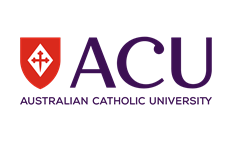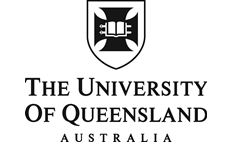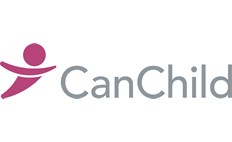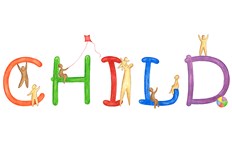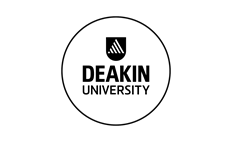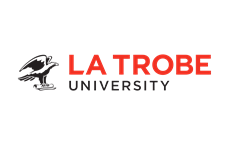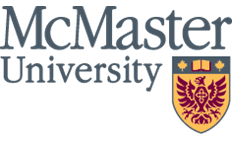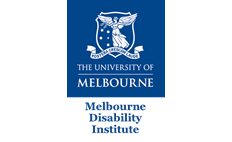Resources
Resources for Families
- A series of resources providing information related to the Implications of providing wrist-hand orthoses study. The resources explain why the research was needed, how the study was conducted, the results and what was learnt.
- A guide for young people with cerebral palsy to help recognise signs of mental health problems: Mental Health toolkit for young people with cerebral palsy 2022
- For parents of young adults with cerebral palsy: Mental Health Toolkit for parents of young adults with cerebral palsy 2022
- An information guide for parents of children with cerebral palsy download pdf, 1.9mb
- What’s the Evidence? The Peninsula Cerebra Research Unit ‘What’s the Evidence’ reports are an ongoing series of reports designed to summarise what is known about the effectiveness of a particular treatment or therapy. Click here to view their reports on a range of therapies.
- The ICF for Parents (P-ICF) To help parents and families understand developmental rehabilitation in cerebral palsy with the International Classification of Functioning, Disability and Health (ICF), researchers at CanChild have created five videos about using the ICF framework for rehabilitation in cerebral palsy. Click here to view the videos.
- Stem cells as therapy for cerebral palsy
- “If I knew then what I know now…” Tips FOR parents of children and youth with cerebral palsy, FROM parents
Research exploring experiences of parents raising children with cerebral palsy has uncovered advice and tips for new parents of children with cerebral palsy to help them on their way through this experience. The aim of this tip sheet is to outline this advice so it can be used to help with the journey of raising a child with cerebral palsy.
This information is provided courtesy of our partner CanChild Centre for Childhood Disability Research
Download the pdf - CanChild’s Keeping Current; a review of alternative and complementary therapies
This Keeping Current is one of a series of reports that discuss the effectiveness of rehabilitation interventions for children and youth with brain injury.
Part 1 reviews the “what, why, how and who” of alternative and complementary therapies and explores the controversies about alternative and complementary therapies in relation to conventional “western” medicine.
Part 2 – “Evaluating the Evidence” – provides guidelines for evaluating conventional and internet evidence about alternative and complementary therapies.
This information is provided courtesy of our partner CanChild Centre for Childhood Disability Research. - Respiratory risk checklist for young people with cerebral palsy – To assess risk factors for respiratory problems in children with cerebral palsy, a new interactive online checklist has been produced. The checklist is designed for families, and it provides individualized information. Click here to access the checklist.
- Wellbeing for parents and carers is a resource that was developed based on the perspectives of parents and professionals for enhancing support for the mental wellbeing of parents of children with a disability. Click here to access the resource.
Useful Links:
- CanChild Centre for Childhood Disability Research is a world leader in the field of childhood disability, providing educational resources and conducting innovative research at McMaster University in Canada. Their educational materials have been largely written for parents and service providers.
- Cerebral Palsy Alliance; an organisation that provides family-centred therapies, life skills programs, equipment and support for people living with cerebral palsy and their families. Cerebral Palsy Alliance provides professional development and training for employees within the disability sector, and funds cerebral palsy research through the CPA Research Foundation.
- Cerebral Palsy Support Network; a not-for-profit organisation providing information and support services to people living with cerebral palsy and their families. The CPSN helps empower individuals to lead more independent lives and provide support in a variety of ways to their families.
- Raising Children Network is an online resource funded by the government, providing scientifically validated information that is translated into everyday language, to help parents and carers make decisions that work for them in their individual family circumstances.
- Adult Cerebral Palsy Hub has been established to create a home for adults with Cerebral Palsy and put their needs at the forefront of the minds of the medical and research community.
Resources for Health Professionals
The identification and measurement of dyskinesia in children with cerebral palsy. A toolkit for clinicians.
The toolkit summarises the currently available tools that can be utilised to identify and classify dyskinesia in children with cerebral palsy and measure its severity and impact on activity and participation using the framework of the International Classification of Functioning, Disability and Health (ICF). The implementation of the toolkit aims to increase clinicians’ awareness of dyskinesia in children with cerebral palsy, highlight the importance of correct identification and uniform measurement and promote understanding of the impact on treatment interventions selected for these children. The toolkit has been developed as part of a knowledge translation fellowship through the Centre of Research Excellence in Cerebral Palsy (CRE-CP).
Click here to access the Toolkit
Single Event Multilevel Surgery (SEMLS)
- Rehabilitation of children with cerebral palsy after single-event multilevel surgery (pdf, 4MB). Pam Thomason and H. Kerr Graham
- Single-event multilevel surgery in children with spastic diplegia; a pilot randomized controlled trial (pdf, 4MB). Journal of Bone and Joint Surgery
- Multilevel surgery for equinus gait in children with spastic diplegic cerebral palsy; medium-term follow-up with gait analysis (pdf, 708KB). Journal of Bone and Joint Surgery
- The transverse Vulpius gastrocsoleus recession for equinus gait in children with cerebral palsy (pdf, 274KB). The Bone & Joint Journal
- Single event multilevel surgery in children with bilateral spastic cerebral palsy: A 5 year prospective cohort study (pdf, 291KB). Gait & Posture
- Explaining the variability improvements in gait quality as a result of single event multi-level surgery in cerebral palsy (pdf, 783KB). Gait & Posture
Consensus Statement on Hip Surveillance for Children with Cerebral Palsy
The ‘Consensus Statement on Hip Surveillance for Children with Cerebral Palsy: Australian Standards of Care’ was developed and published in 2008 to guide health professionals in the frequency of hip surveillance for children with cerebral palsy. The Consensus Statement was revised during 2013 by a National Working Group and has been updated and renamed the ‘Australian Hip Surveillance Guidelines for Children with Cerebral Palsy: 2014’. As well as providing guidance about frequency of hip surveillance, the associated documents provide education and information for all health professionals working with children with cerebral palsy and their families.
The full guidelines and a summary poster can be accessed here (links to external site).
A paper published in Developmental Medicine and Child Neurology further details the revision process at http://www.ncbi.nlm.nih.gov/pubmed/25846730
Classification Systems
The Communication Function Classification System (CFCS) provides 5 levels to describe everyday communication performance. While originally developed for use with individuals with cerebral palsy, the CFCS is now being used to describe communication performance of individuals with any disability. Visit the CFCS website for further information.
The Gross Motor Function Classification System is a 5 level classification system that describes the gross motor function of children and youth with cerebral palsy on the basis of their self-initiated movement with particular emphasis on sitting, walking, and wheeled mobility. Visit the CanChild website to access further information and related resources, translated to many languages.
The Manual Ability Classification System (MACS) describes how children with cerebral palsy use their hands to handle objects in daily activities. MACS describes five levels. The levels are based on the children’s self-initiated ability to handle objects and their need for assistance or adaptation to perform manual activities in everyday life. Visit the MACS website for further information.
Useful Networks
The Australasian Academy of Cerebral Palsy and Developmental Medicine (AusACPDM) is a multidisciplinary group committed to advancing knowledge and awareness of evidence based practice in the field of childhood physical disability. The AusACPDM conducts a bi-annual scientific meeting and supports research, education and advocacy in the field of childhood physical disability.
The American Academy of Cerebral Palsy and Developmental Medicine (AACPDM) is is a global leader in the multidisciplinary scientific education of health professionals and researchers dedicated to the well being of people with and at risk for cerebral palsy and other childhood-onset disabilities.


